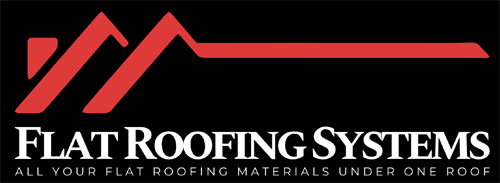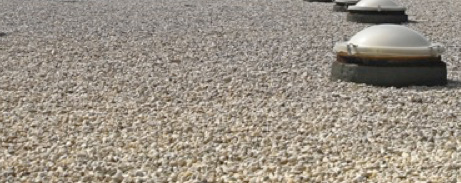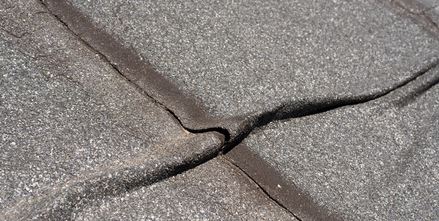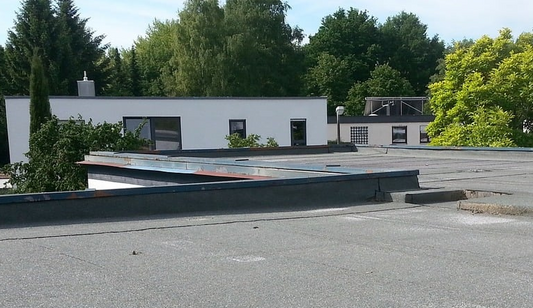You'll find that EPDM rubber roofing is a top choice for your home due to its impressive durability, eco-friendly qualities, and energy efficiency.
With a lifespan of up to 30 years and the ability to withstand severe weather, it's both a practical and sustainable option. EPDM roofs are aesthetically appealing, blending seamlessly with any architectural style while being low-maintenance.
Additionally, they contribute to reduced energy costs thanks to their reflective surfaces. This material is also 100% recyclable, enhancing your home's green credentials. Exploring further, you'll uncover deeper insights into how EPDM roofing can benefit you in the long run.
Key Points
- EPDM roofing's lifespan of 20-30 years offers long-term durability and cost-effectiveness for homeowners.
- Its energy-efficient properties can reduce home energy bills by up to 25%.
- EPDM is 100% recyclable, appealing to environmentally conscious homeowners.
- The material's resistance to harsh weather and UV radiation ensures reliable protection against diverse climatic conditions.
- EPDM can be installed directly over existing roofs, minimizing installation costs and reducing waste.
Benefits of EPDM Roofing
EPDM roofing, with its impressive life expectancy of as much as 50 years, offers a durable and long-lasting solution that's perfect for a variety of buildings, from schools to hospitals.
You'll find that its natural appearance seamlessly blends with any architectural style, while also resisting the accumulation of dirt. This makes it not only aesthetically pleasing but also low maintenance.
Moreover, if you're environmentally conscious, EPDM roofs are an excellent choice.
They're produced using low energy processes and contribute to sustainable building practices. The material's resilience to harsh weather, including hail and abrasion, guarantees that it remains effective and intact through extreme conditions.
This robustness means fewer repairs and replacements over its lifetime, saving you money and hassle.
Furthermore, EPDM roofing supports eco-friendly initiatives like green roofs.
It doesn't support moss growth, so you won't need stone chippings or solar reflective paint. Plus, it's ideal for roofs with sedum plants, as there are no issues with root penetration.
With over a century of rubber technology backing its development, EPDM roofing isn't just a practical choice; it's a smart, future-facing investment for your home.
Installation and Maintenance
Proper installation is essential to maximizing the benefits of your EPDM rubber roof covering.
You'll need a clean, dry, and debris-free surface. It's best to hire trained professionals, as the installation complexity can be quite challenging.
The typical process includes applying adhesive or seam tape to your roof deck, laying down the EPDM membrane, and then securing the edges with metal termination bars.
EPDM roofs come in various thicknesses and may include reinforcements like fleece-backing.
These variations can influence both the installation method and maintenance needs. You've got options for installation styles too, such as fully adhered, mechanically fastened, or ballasted.
The choice often depends on your building's design, the local climate, and specific regulatory requirements.
Maintenance is equally important.
To guarantee your roof's longevity and peak performance, you should keep up with regular inspections and cleanings.
Of course, promptly repairing any damage or leaks is critical.
Comparing Roofing Materials
When choosing the best material for your roof, it's critical to weigh longevity, energy efficiency, and environmental impact.
Here's how EPDM rubber roofing stacks up against other common materials:
1. Longevity: EPDM roofs boast a lifespan of 20-30 years, substantially outperforming asphalt shingles, which typically last 10-20 years.
This longer lifespan not only means less frequent replacements but also fewer hassles and costs over time.
2. Energy Efficiency: Compared to metal roofing, EPDM has a reflective surface that can slash your energy bills by up to 25%.
This makes it a smarter choice if you're looking to cut costs and improve your home's thermal performance.
3. Environmental Impact: EPDM roofing isn't only 100% recyclable but also requires less energy for production and installation than asphalt shingles.
This reduced carbon footprint makes EPDM a greener choice for environmentally conscious homeowners.
Choosing EPDM over other materials like PVC, which is less resistant to UV radiation and harsh weather, clearly shows its superiority in several key areas.
EPDM Roofing Applications
Ideal for a variety of building types, EPDM rubber roofing adapts remarkably well to different roofing needs, from residential houses to larger structures like schools and shopping centers.
You'll find it particularly beneficial for your home, whether you're dealing with a flat, low-slope, or even a steep-sloped roof. Its exceptional durability and weather resistance make it a top choice, capable of withstanding diverse climatic conditions without compromising on performance.
Moreover, if you're considering an eco-friendly option, EPDM roofing stands out.
It can be installed directly over your existing roof covering, which not only cuts down on installation costs but also reduces waste, helping you minimize your environmental footprint. This aspect alone makes EPDM an economically savvy and sustainable choice.
The versatility of EPDM extends to its availability in various thicknesses – 1.52 mm, 2.28 mm, and 3.05 mm.
This variety allows you to select the thickness that best suits your roofing's specific demands, enhancing its longevity and effectiveness. Speaking of longevity, an EPDM roof typically lasts between 20 to 30 years, making it a worthwhile investment for long-term home maintenance.
Choosing the Right EPDM Products
After exploring the broad applications of EPDM roofing, you might wonder how to select the best products for your specific needs.
Choosing the right EPDM product means considering several key factors that guarantee the longevity and effectiveness of the material.
1. Check for Quality Certifications: Look for products like Elevate EPDM Roofing Systems, which boast ISO 9001 and ISO 14001 certifications. These standards assure you of superior quality control and environmental management during manufacturing.
2. Evaluate the Manufacturer's Reputation: It's essential to choose products from reputable manufacturers. For instance, Classicbond EPDM and Resitrix EPDM are both established brands, offering a wealth of experience and reliability, with products known for their durability and performance.
3. Consider Product Specific Features: Focus on specific product features that meet your project requirements.
Common Issues and Solutions
Even the best EPDM rubber roofing systems might encounter issues over time.
As a homeowner, you're likely to face a few common problems, but don't worry, there are straightforward solutions to keep your roof in top shape.
One issue you might come across is shrinkage.
EPDM can shrink due to extreme temperature fluctuations, leading to gaps at the edges or around fixtures.
To combat this, certify that your installer uses high-quality EPDM with a proven resistance to shrinkage and conducts regular inspections.
Another problem could be punctures or tears, often caused by falling branches or walking on the roof without care.
You can prevent this by trimming overhanging tree limbs and using walk pads when accessing your roof.
If damage occurs, small punctures or tears are easily repaired with a patch kit designed for EPDM.
Lastly, pooling water can be a concern, especially in flat roofs.
This usually indicates improper installation or sagging.
Resolving this might require adjusting the slope of your roof or improving drainage with additional scuppers or drains.
Rounding Up
You've seen why EPDM rubber roofing stands out for its durability, ease of maintenance, and cost-effectiveness. Whether you're comparing different materials or exploring various applications, EPDM is a top contender that can meet your home roofing needs.




